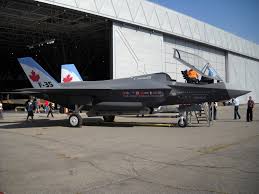Canada’s Fighter Jet Purchase: A Step Towards Modernization

Importance of the Fighter Jet Purchase
In a move that signals its commitment to national defense and modernization, Canada has announced plans to purchase new fighter jets. This decision is particularly significant as the Canadian Forces have been operating with aging aircraft that necessitate replacement to maintain air sovereignty.
Recent Developments
As of October 2023, the Canadian government is in the final stages of negotiations to purchase a fleet of advanced fighter jets, with Lockheed Martin’s F-35 Lightning II emerging as the front-runner in the competition. Industry experts and defense analysts have been closely monitoring the procurement process, noting the urgency of the decision given the aging CF-18 Hornets that have been the backbone of the Royal Canadian Air Force.
Canada’s Minister of National Defence, Anita Anand, recently underscored the importance of acquiring next-generation aircraft to ensure not just defense capabilities but also to participate in international coalitions. The projected cost of this acquisition is estimated to be around $19 billion, covering both the purchase and lifetime maintenance of the aircraft.
Challenges and Considerations
Despite the potential benefits, the purchase of new fighter jets has not been without its challenges. Critics have raised concerns regarding budget overruns, timelines, and the environmental impact of operating more advanced military aircraft. Moreover, there is ongoing debate surrounding the choice of aircraft, with some advocating for development of a separate indigenous aircraft program instead of relying solely on foreign technology.
Significance and Future Outlook
The decision on purchasing fighter jets is expected to serve not only as a critical upgrade to Canada’s military capabilities but also as a boost to the Canadian defense industry. Engaging Canadian firms in the supply chain for these jets could lead to job creation and enhanced technological expertise within the country. As Canada navigates through geopolitical tensions, especially with its commitments to NATO and the Arctic region, the modernization of its military fleet is increasingly relevant.
In conclusion, the purchase of new fighter jets represents a pivotal moment in Canada’s defense strategy. It reflects not just a response to immediate defense needs but also a long-term commitment to enhancing national security and technological competitiveness. Observers will be keen to see how the procurement process unfolds in the coming months, especially as international dynamics continue to evolve.


